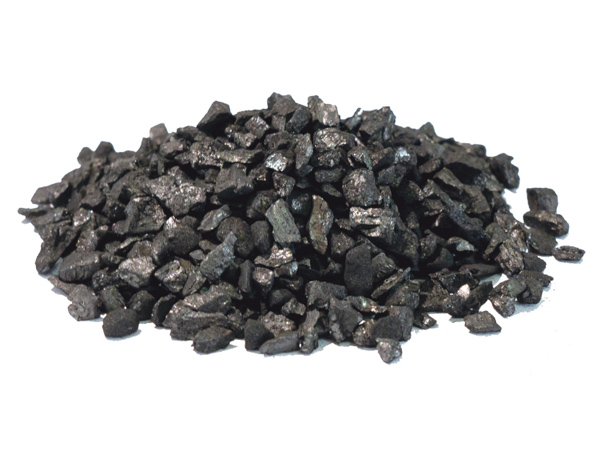The recarburizer can be said to be a major reduction in the foundry industry. In the whole process of smelting in the heating furnace, the recarburizer will be promoted along with the recycled waste materials such as scrap steel, which can reduce the demand for cast iron and reasonably reduce the cost of casting products. , But when applying recarburizers, there are five major elements that harm the absorption rate of recarburizers. Forgers must bear in mind!
1. The harm of the particle size of the recarburizer
The whole process of recarburization using recarburizers includes the whole process of dissolution and external diffusion and the whole process of air oxidation loss. The particle size of the recarburizer is different, and the rate of dissolution external diffusion and the rate of air oxidation loss are also different. The absorption rate of the recarburizer lies in the comprehensive effect of the dissolution and diffusion rate of the recarburizer and the air oxidation loss rate: under normal conditions, the recarburizer particles are small, the dissolution rate is faster, and the loss rate is large; The particles are large, the dissolution rate is relatively slow, and the loss rate is small. The choice of the particle size of the recarburizer is related to the diameter and volume of the furnace. Under normal conditions, the diameter and volume of the furnace are larger, and the particle size of the recarburizer should be larger; on the contrary, the particle size of the recarburizer should be smaller. The particle size of crystalline high-purity graphite smelted in heating furnaces below 1 ton is 0.5-2.5 mm; the particle size of crystalline high-purity graphite smelted in 1 ton-3t heating furnaces is 2.5-5 mm; the particle size of crystalline high-purity graphite smelted in 3t-10t heating furnaces is 5.0~ 20mm; The particle size of the high-purity graphite that is covered in the pouring storage is 0.5~mm.

2. The harm of the added amount of recarburizer
Under the same standard of temperature and composition, the saturation state concentration value of carbon in molten iron. The solubility limit of carbon in pig iron is ([C%]=1.3+0.0257T-0.31[Si%]-0.33[P%]-0.45[S%]+0.028[Mn%] (T is the temperature of molten iron). In contrast, the greater the amount of recarburizer added, the longer the time required for dissolution and external diffusion, the greater the relative loss rate, and the lower the absorption rate.
3. The harm of temperature to the absorption rate of recarburizer
From the analysis of kinetic model and thermal analysis, the reducibility of the molten iron is related to the equilibrium temperature of the C-Si-O system, that is, the O, C, and Si in the molten iron will reflect. The equilibrium temperature varies with the overall target C and Si composition. When the molten iron is at the equilibrium temperature, the air oxidation that produces carbon is preferred, and C and O are converted into CO and CO2. In that way, the carbon air in the molten iron is depleted by oxidation. Therefore, at the equilibrium temperature, the absorption rate of the recarburizer decreases; when the recarburization temperature is below the equilibrium temperature, because the temperature is lower, the saturation solubility of carbon decreases, and the rate of dissolution and diffusion of carbon decreases, so the yield is also Lower; when the recarburization temperature is at the equilibrium temperature, the absorption rate of the recarburizer.
4. The harm of molten iron mixing to the absorption rate of recarburizer
Mixing is beneficial to the dissolution and external diffusion of carbon, and prevents the recarburizer from floating on the surface of the molten iron and being ablated. Before the recarburizer is completely dissolved, the mixing time is long and the absorption rate is high. Mixing can also reduce the time for carbon increase and heat insulation, reduce the production cycle, and prevent the ablation of aluminum alloy elements in the molten iron. But the mixing time is too long, not only has a great harm to the life of the furnace, but also after the recarburizer is dissolved, the mixing will increase the carbon loss in the molten iron. Therefore, the appropriate mixing time for molten iron should be to ensure that the recarburizer is completely dissolved.
5. The harm of molten iron components to the absorption rate of recarburizers
When the original carbon content in the molten iron is high, the digestion and absorption speed of the recarburizer is relatively slow under the solubility limit, the intake is small, the ablation is relatively high, and the absorption rate of the recarburizer is low. When the original carbon content of the molten iron is low, the situation is reversed. In addition, the silicon and sulfur in the molten iron block the digestion and absorption of carbon and reduce the absorption rate of the recarburizer; while the manganese element is beneficial to the digestion and absorption of carbon and the absorption rate of the recarburizer. In terms of the level of harm, silicon is the greater, followed by manganese, and carbon and sulfur are less harmful. Therefore, in the specific processing process, manganese should be added first, then carbon, and then silicon.
Tel: (Mr. Zhang) 13388003988
Tel: (Ms. Hu) 18340953015
Email: arther-yang@163.com
ys18340953015@163.com
Address: No. 5 Yongsheng Road, Laobian District, Yingkou City, Liaoning Province
Website: www.lnsnm.com
